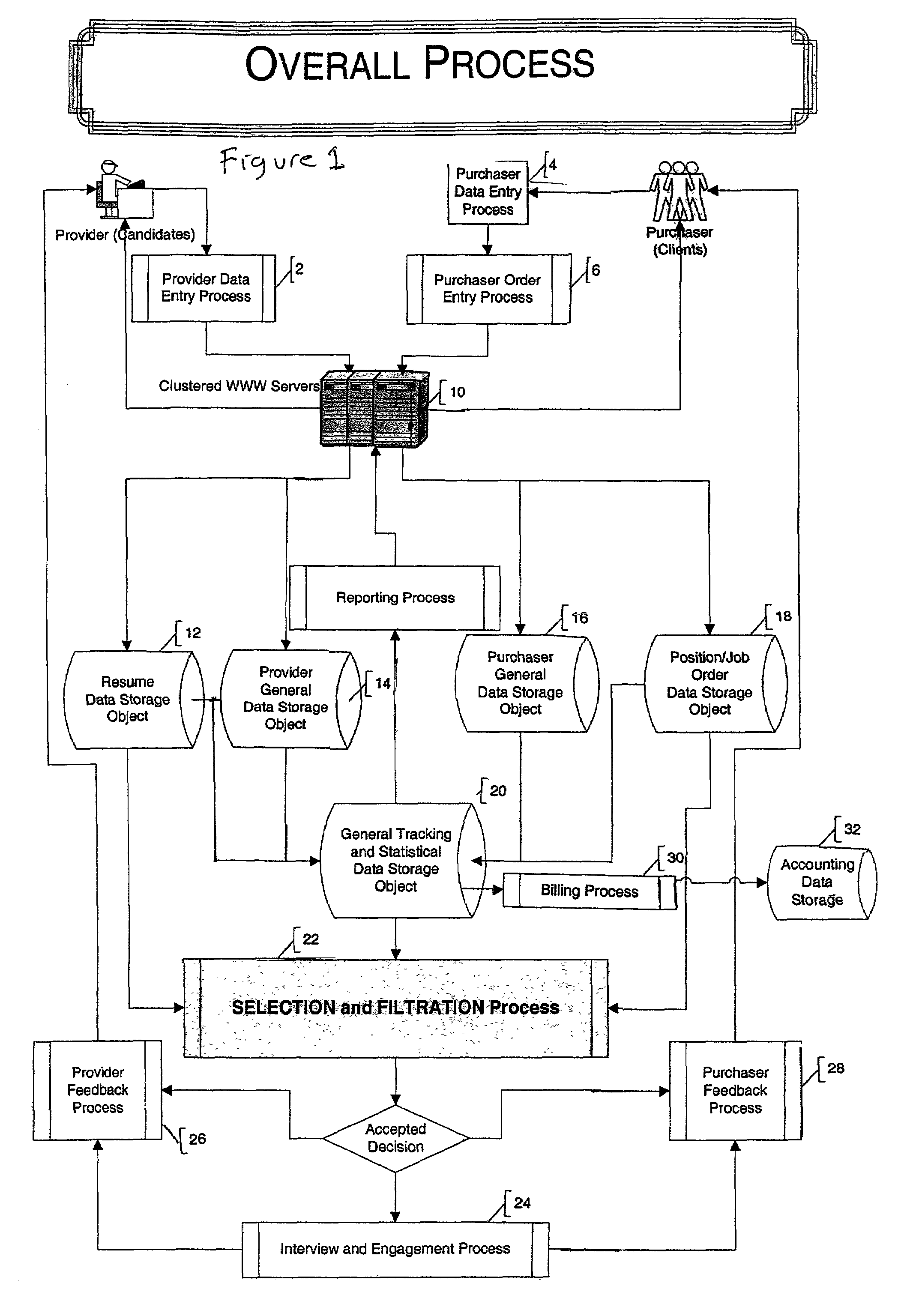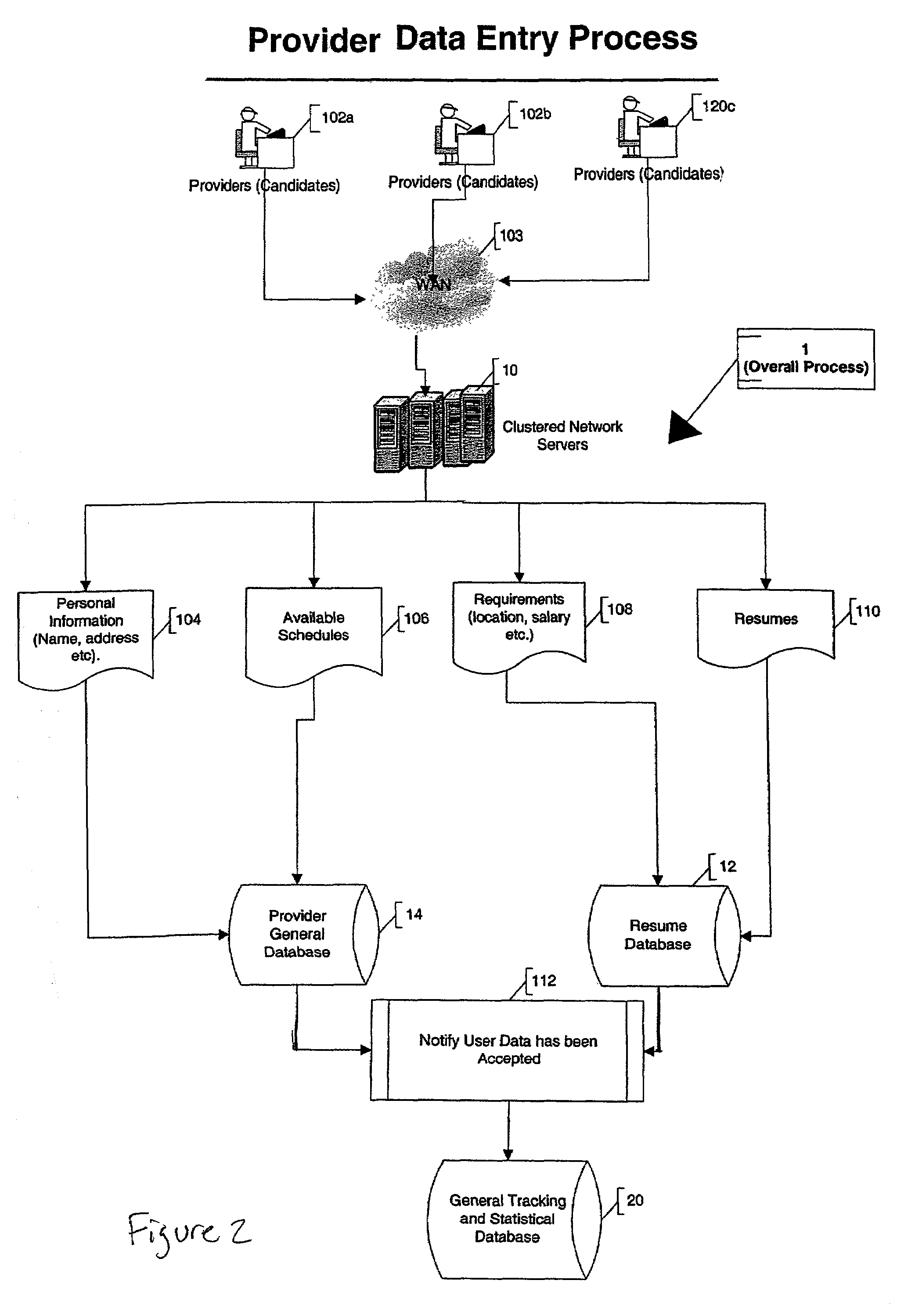Automated system and method for managing a process for the shopping and selection of human entities
a technology of automatic system and process, applied in the direction of electrical programme control, programme total factory control, instruments, etc., can solve the problems of inefficiency in both the operation of the system and the cost involved in operating the system, the system is not easy to operate properly, and the tasks to be tracked by humans are susceptible to human errors. , to achieve the effect of avoiding misunderstandings, facilitating continuous updating of the knowledge base, and high useful results
- Summary
- Abstract
- Description
- Claims
- Application Information
AI Technical Summary
Benefits of technology
Problems solved by technology
Method used
Image
Examples
Embodiment Construction
[0134]Preferred embodiments of the current invention are now described with reference to the figures. Certain embodiments discussed herein relate to employment and dating services. However, the current invention may be used in any application involving the seeking out, selection and / or matching of humans. Accordingly, the current invention is not limited to only the employment or dating applications.
[0135]6.1. Implementation Methods
[0136]The embodiments described herein may be implemented through a computer program (or group of computer programs) stored on magnetic storage devices and running on computer hardware and / or software. However, other suitable means to effect the embodiments may be used.
[0137]These embodiments may be implemented in different computer environments. For example, the embodiments may be implemented on private shared computer(s) (also known as servers) with users accessing those servers using serial terminals, a local area network, a virtual private network (VP...
PUM
 Login to View More
Login to View More Abstract
Description
Claims
Application Information
 Login to View More
Login to View More - R&D
- Intellectual Property
- Life Sciences
- Materials
- Tech Scout
- Unparalleled Data Quality
- Higher Quality Content
- 60% Fewer Hallucinations
Browse by: Latest US Patents, China's latest patents, Technical Efficacy Thesaurus, Application Domain, Technology Topic, Popular Technical Reports.
© 2025 PatSnap. All rights reserved.Legal|Privacy policy|Modern Slavery Act Transparency Statement|Sitemap|About US| Contact US: help@patsnap.com



